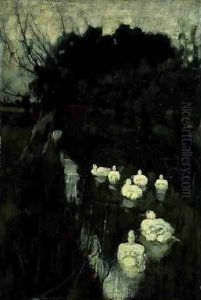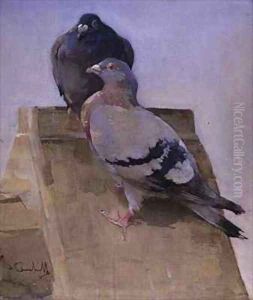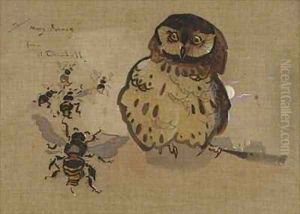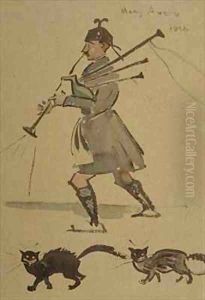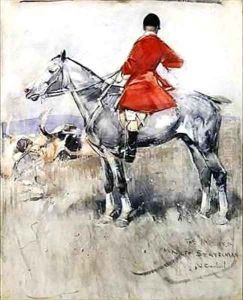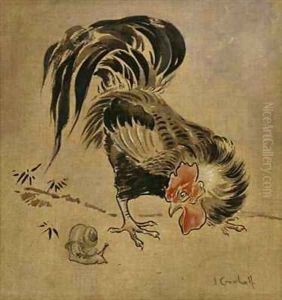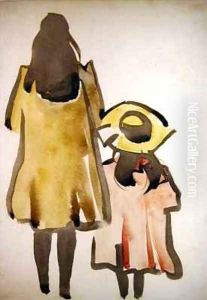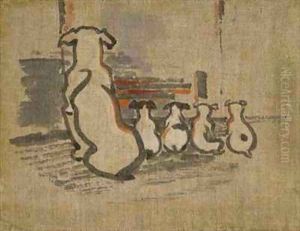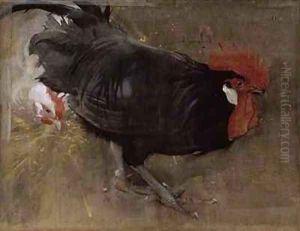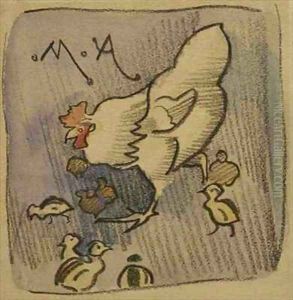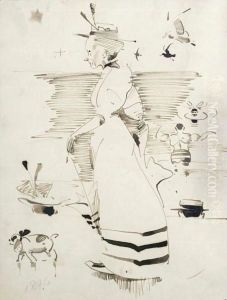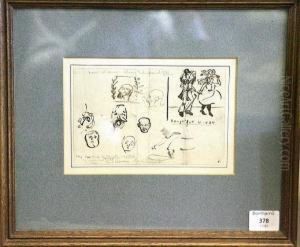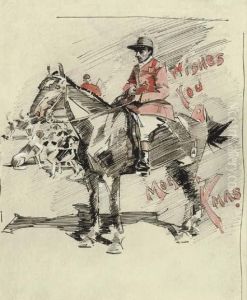Joseph Crawhall Paintings
Joseph Crawhall II was a British artist known for his distinct style and contribution to the British Arts and Crafts movement. Born on August 20, 1861, in Morpeth, Northumberland, he was part of a talented family; his father, Joseph Crawhall I, was also an artist, and his brother, George Edward Crawhall, was an author and illustrator.
Crawhall specialized in watercolor and was celebrated for his delicate treatment of this medium, often depicting birds, flowers, and rural scenes with a remarkable lightness of touch. His work showed a strong influence from Japanese art, which was popular in Europe during the late 19th century, and he was known for his sparse, almost minimalist compositions that focused on the essence of his subject with little to no background detail.
In the early 1880s, Crawhall was associated with the group of artists known as the Glasgow Boys, a loose collective of young artists who aimed to break away from the traditional Victorian style of painting. This group was influenced by the fresh and direct painting styles of the Impressionists and the Realists, as well as by Japanese prints. Crawhall's own style was well aligned with the Glasgow Boys' emphasis on naturalism and their preference for working en plein air.
Despite his association with the Glasgow Boys, Crawhall was an independent and somewhat reclusive figure, rarely exhibiting with the group. He traveled extensively, visiting Spain and Morocco, where he was inspired by the vibrant culture and landscape. His travels influenced his artistic work, bringing in exotic themes and brighter colors.
Crawhall's artistic output was not prolific, partly due to his perfectionist tendencies and the slow, meticulous method he employed in his watercolors. He also worked in other mediums, such as woodblock printing and illustration, contributing to some publications of his time.
Joseph Crawhall's life was relatively short; he died on May 24, 1913, in London. Despite his modest output, his work has been admired for its originality and charm and continues to be appreciated for its clarity, simplicity, and sensitivity to the natural world.





